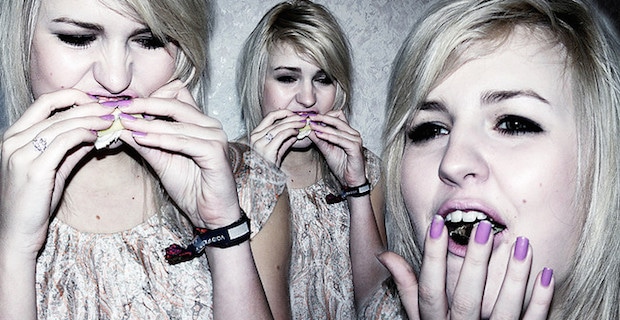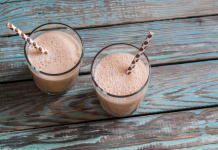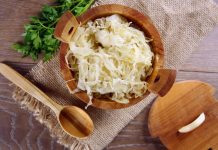
They're the downfall of many a weight-reducing diet and can transform a bad mood into a good one with a bite of a cookie or sip of coffee. Food cravings are a force to be reckoned with.
The tongue has more than 9,000 taste buds, so why do we crave potato chips and chocolate but not strawberries or broccoli? Wouldn't our health (and weight) be so much easier to manage if we could be tempted by Brussels sprouts rather than a chocolate bar? We berate ourselves for a lack of will power, but cravings may not be our fault! Experienced by at least 60 percent of people, a food craving can mean anything from a mild desire to an intense urge to eat a particular food. While men believe cravings are initiated by hunger, women tend to link cravings with emotions, stress and boredom.
Sugar Cravings
Sugar cravings are among the most common. The hunger for sweets starts early. According to the USDA, teenagers ingest 275 cups of sugar per year-that's three-quarters cup of sugar per day! The problem isn't just the profusion of treats and soft drinks that children love (one can of soda alone has almost half a cup of sugar), but the hidden sources such as ready-to-eat cereals, ketchup, sweetened milk products, canned foods, crackers and breads.
Cravings for sugar and starch are most typically due to a drop in blood glucose (sugar). Signs include intense hunger ("I must eat right now"), a strong desire to eat carbohydrates (especially a sugary food or soda), sudden fatigue, lack of concentration, mood swings, headaches, or nausea up to three hours after eating.
Rena Greenberg, founder of the Subconscious Imprinting Technique for Permanent Weight Loss explains that we crave foods because we've already eaten them. "When our body is flooded with simple carbs, we tend to want more of the same," Greenberg says. "The good news is that the more we select healthy, water rich foods, such as salads, fruits and vegetables, the more we begin to crave these healthy selections, and the more in-touch we become with our body's negative reaction to empty-calorie foods-thus the craving for unhealthy snacks diminishes."
To break the sugar habit, replace all refined foods-such as white bread and pasta-with whole grains and fiber-rich foods like brown rice, whole vegetables and fruit, or beans. Fiber helps control the insulin spike caused by eating refined carbohydrates. Keeping a healthy snack with you at all times will stop you from making a beeline to the vending machine when blood sugar drops. Reduce the amount of time between meals and add some protein to every meal and snack. Taking probiotics daily also helps to combat carb-cravings.
Dr. Ellen Cutler, a chiropractor and author of MicroMiracles: Discover the Healing Power of Enzymes and The Food Allergy Cure, suggests that intolerance to carbohydrates might be at the root of the craving. "The paradox is that clinically I have found many people who […] crave sweets, are actually intolerant to sugars," says Cutler. "Their body has a difficult time digesting and absorbing these sugars, which are therefore not available in sufficient quantities for otherwise normal metabolism." Cutler recommends taking a full digestive spectrum enzyme with meals, especially high carbohydrate foods.
Other reasons for sugar addiction may include low serotonin levels, high cortisol levels due to long-term stress, and overuse of antibiotics.
Read more about kicking the sugar habit for good
Salt Cravings
If you prefer a bag of chips to a cookie, your salt cravings may point to a need for trace minerals like iodine or a thyroid issue. In addition to those mid-afternoon Doritos eat-a-thons, cold hands and feet, morning fatigue and a sluggish metabolism are reasons to have thyroid hormones tested at your next physical. Essential to healthy thyroid hormone production, iodine is found in shellfish, iodized salt and dark sea salt, sushi, and in sea vegetables such as kelp, dulse, and nori.
Low iron levels or adrenal fatigue from long-term stress could bring about salt cravings as well.
Chocolate Cravings
Chocolate is a whole other issue. Nearly 30 percent of women and 15 percent of men crave chocolate. With hundreds of compounds, many of which has addictive and psychoactive properties, chocolate is almost more of a drug than a food. When feeling fatigued, chocolate's sugar and caffeine stimulate energy levels providing a quick pick-me-up.
Nicknamed "the love molecule," phenylethylamine-an amphetamine-like compound in chocolate-is a mild aphrodisiac and natural antidepressant. Anandamide in chocolate binds to the same neural receptors as THC, the main ingredient in marijuana, producing feelings of bliss.
Food and Mood
With so many elements that can impact mood, it seems that at least in some cases, what we call emotional eating may be more physiological than we realize. Nonetheless, experts suggest that 75 percent of our eating for reasons other than hunger is caused by emotions or stress.
Suzanne Giesemann, author of Conquer Your Cravings: Four Steps to Stopping the Struggle and Winning Your Inner Battle with Food , explains that an emotional eater "has learned to use food like a drug". "When a person gives in to the relentless, non-hungry urge to eat, a piece of cake or pizza may make them immediately feel better, but the effect is only temporary," Giesemann says. "The cravings will return again and again, never satisfied, until the food craver identifies and deals with the emotions or issues they're literally stuffing down with food."
Greenberg explains that our cravings are linked to pleasure. "We associate love, warmth and friendship with foods like pizza, ice cream, and macaroni and cheese. We may reward ourselves with cookies or chips because in our subconscious mind we relate these foods to relaxation, safety, and gratification."
Read more about how to stop emotional eating
Whether physical or emotional, becoming aware of your cravings is the first step to conquering them, says Greenberg. Recording your urges in a food and mood journal will help you identify the circumstances that may be causing them, so you can kick those cravings to the curb.
Image: daniellehelm










